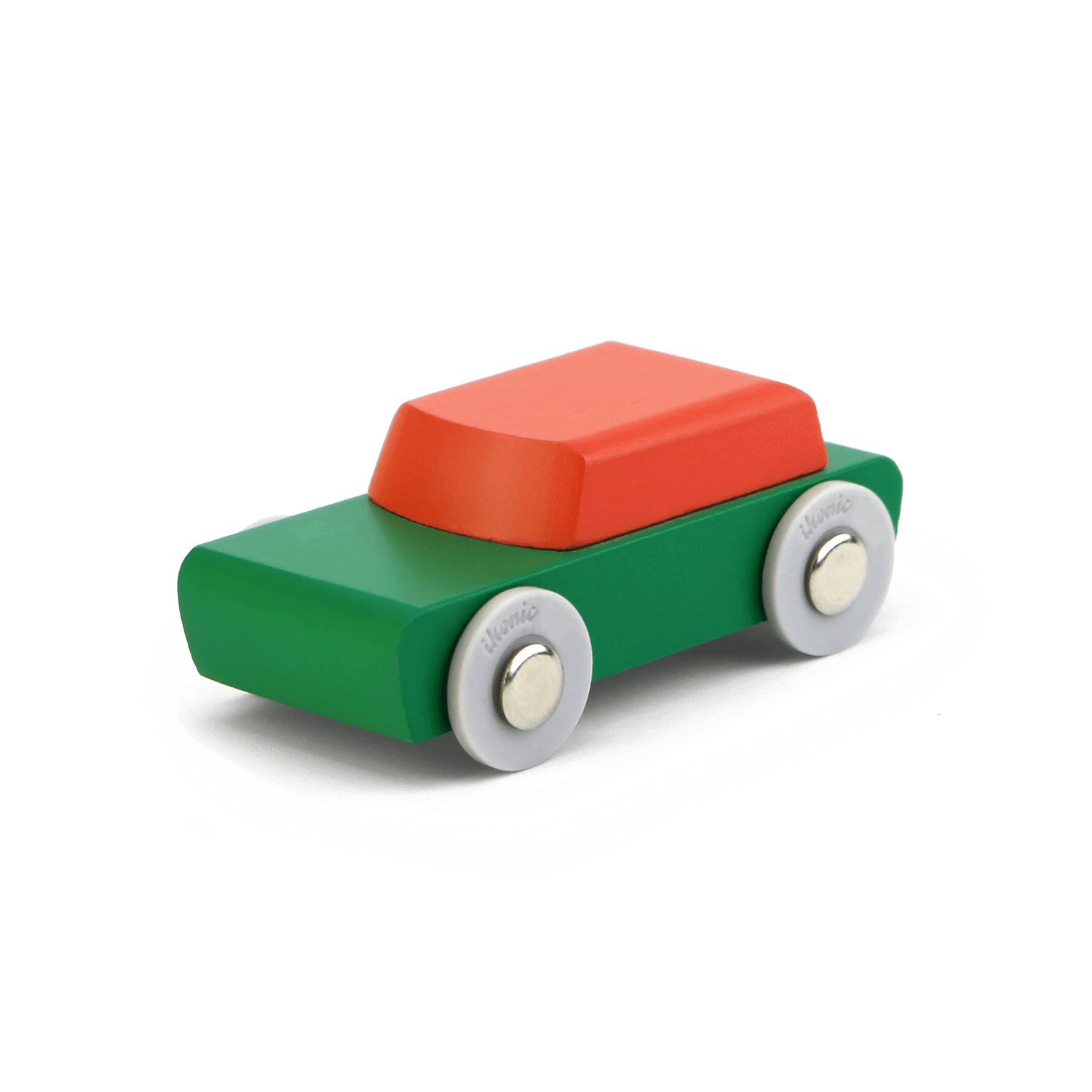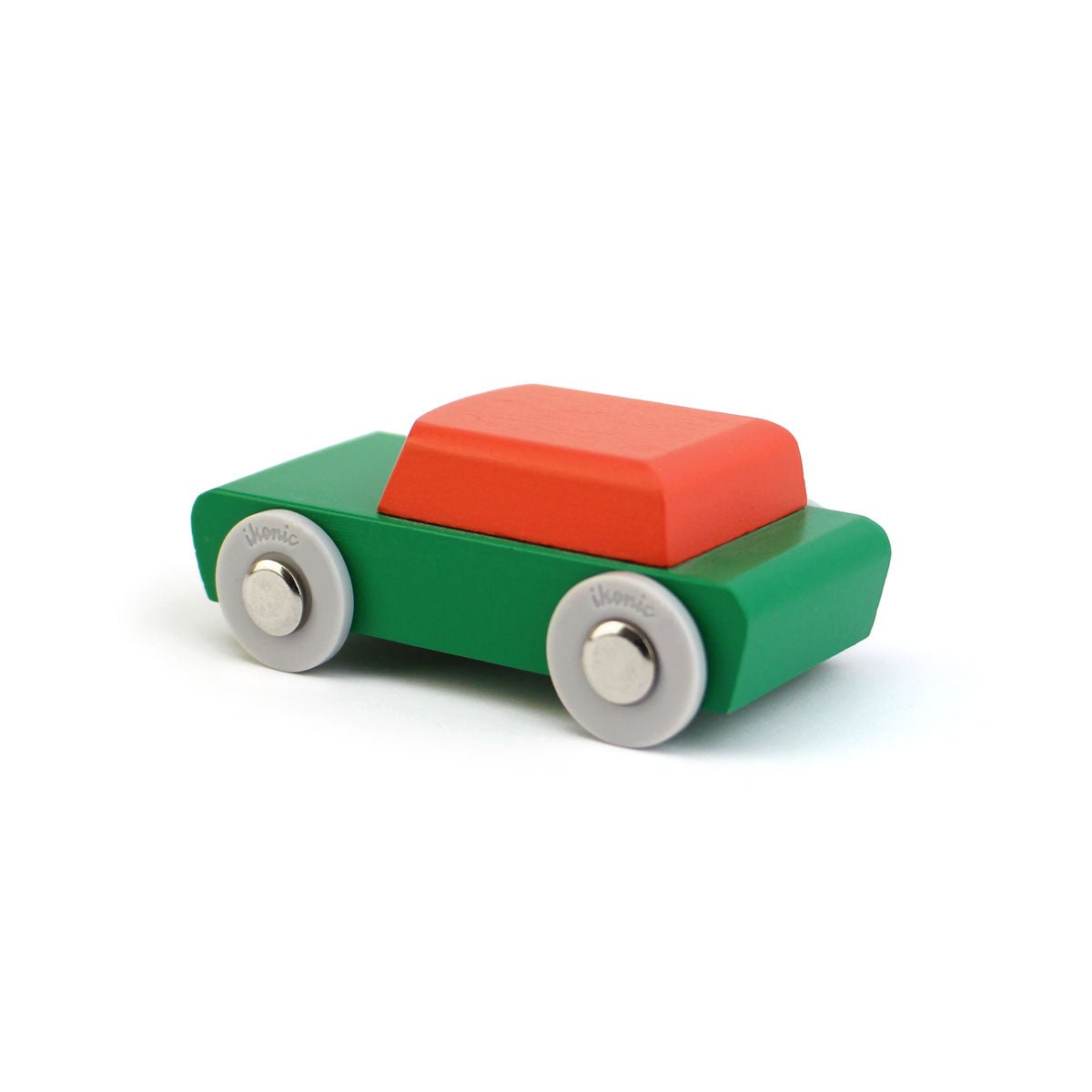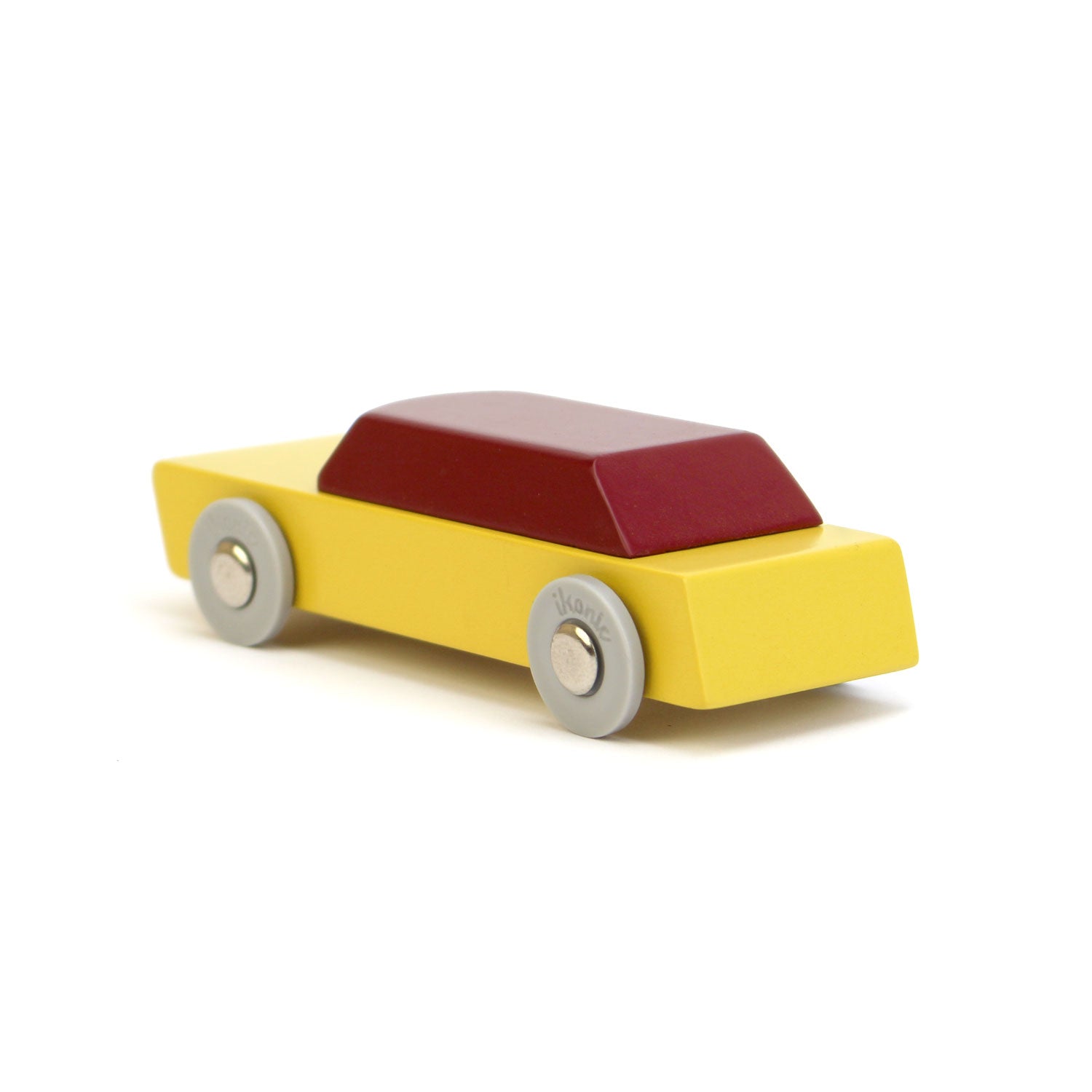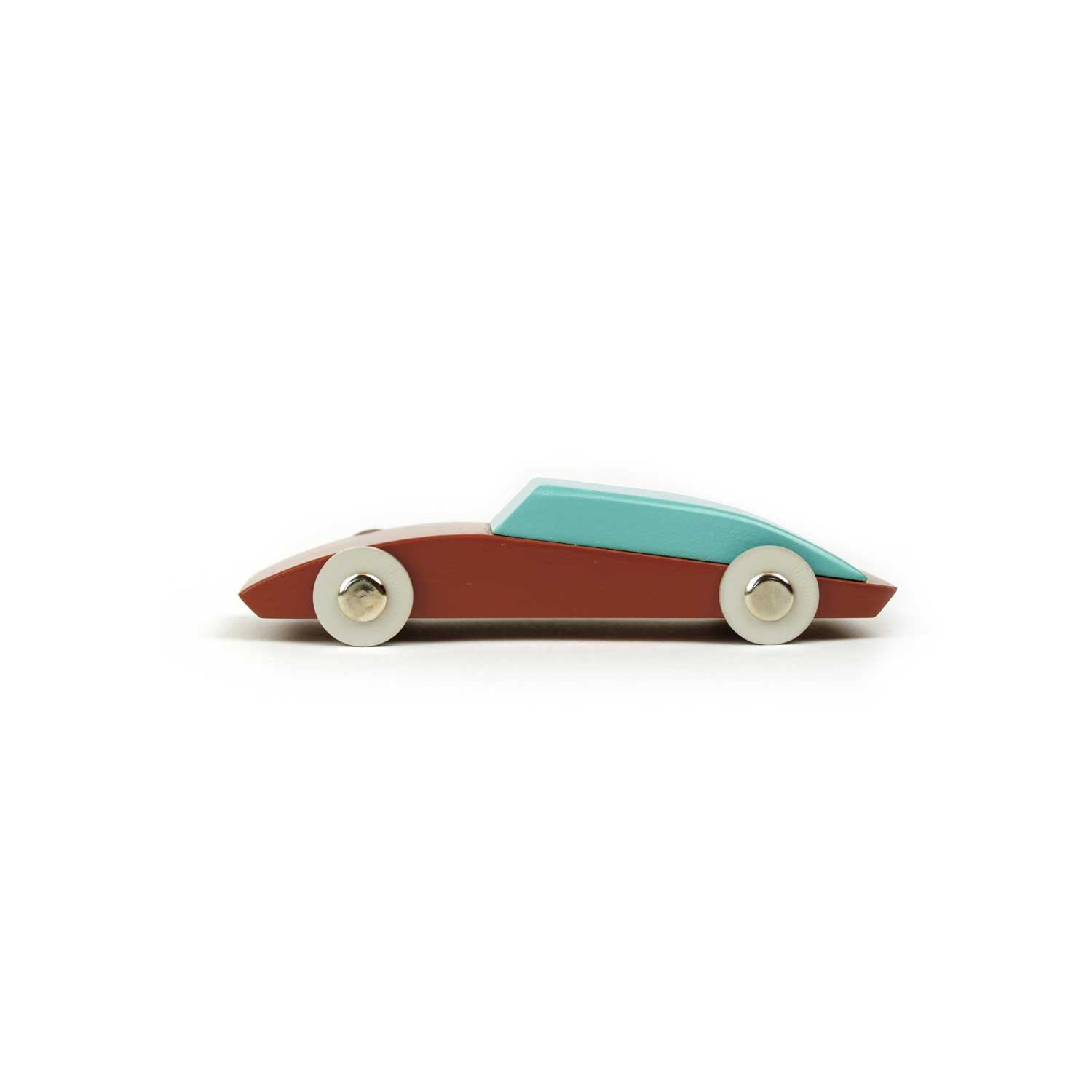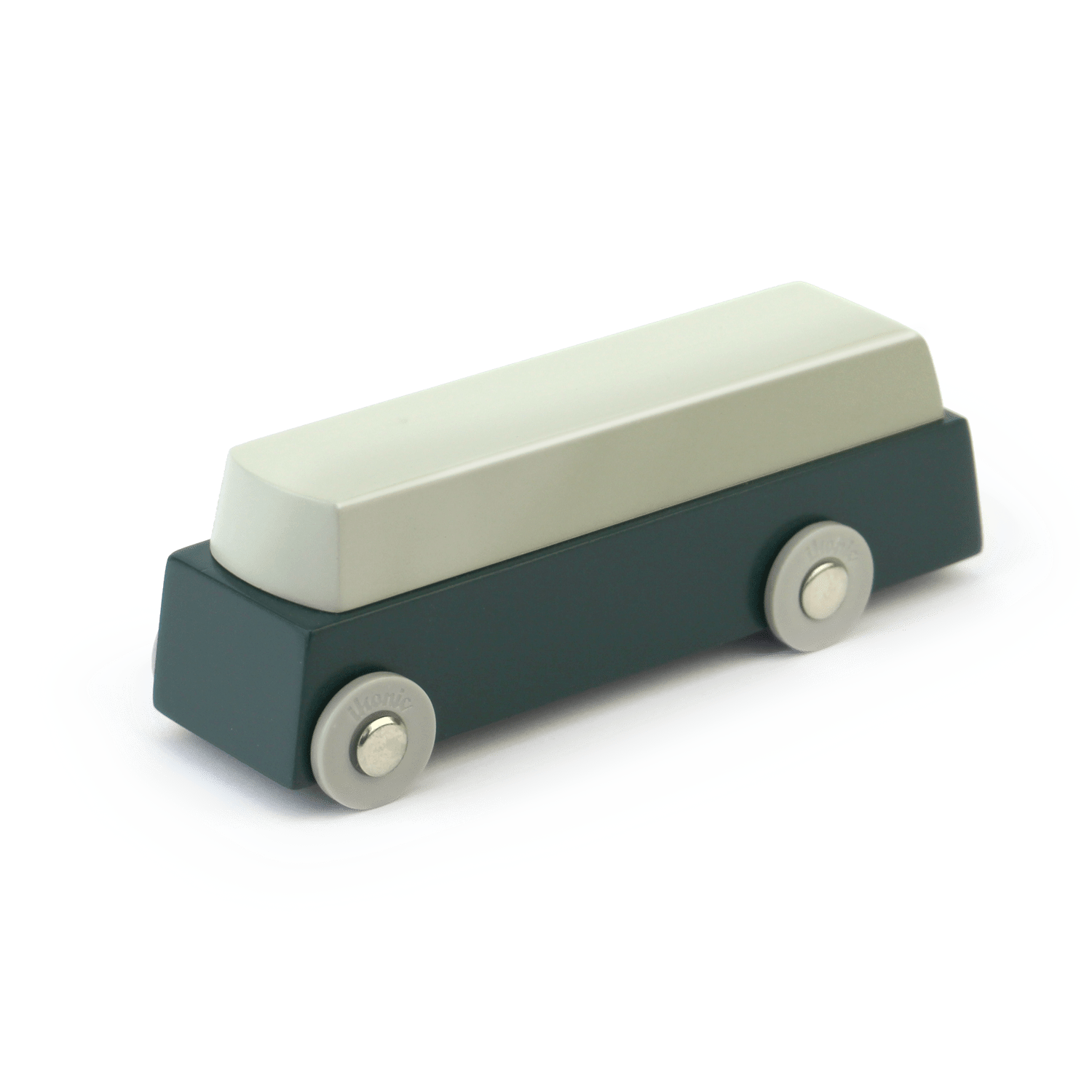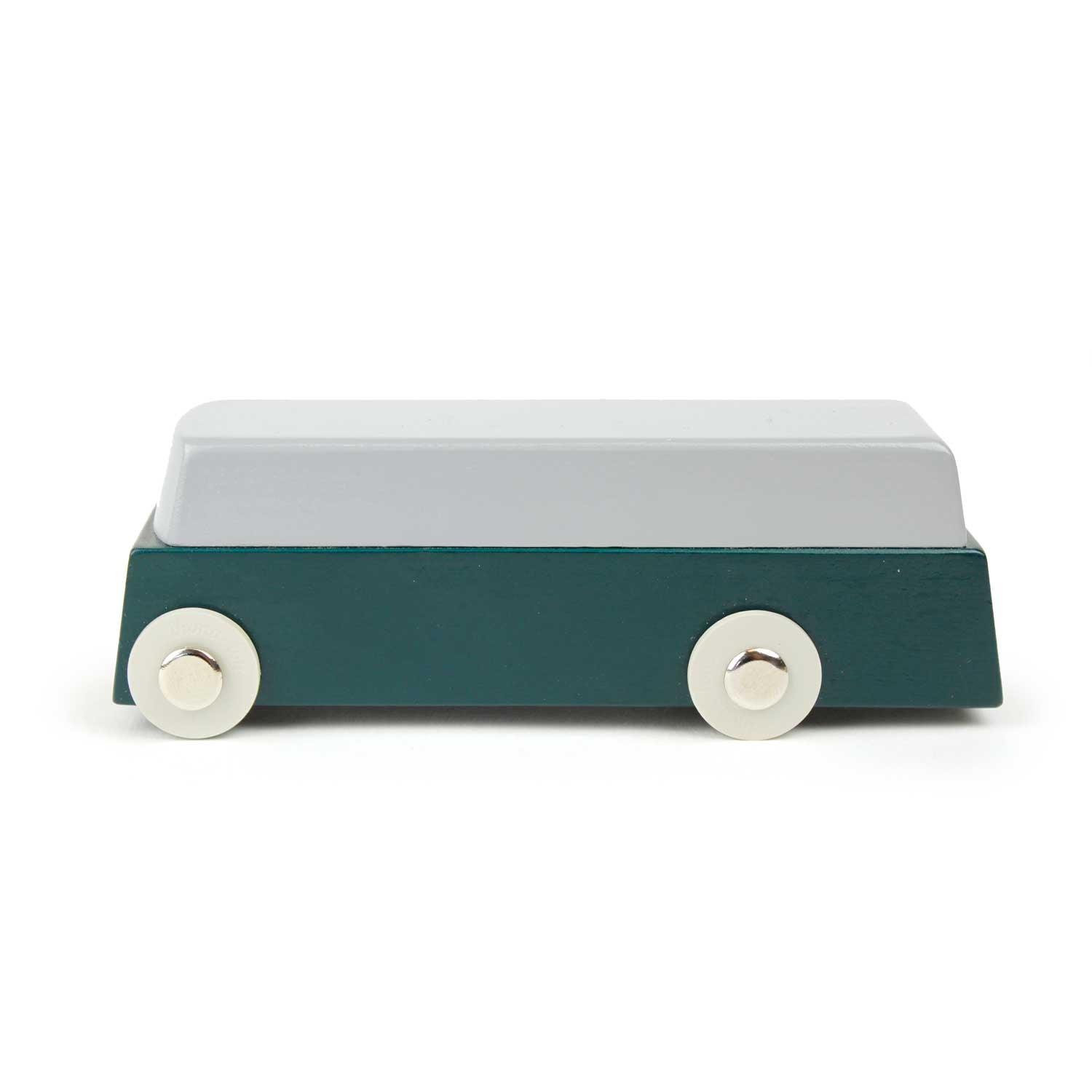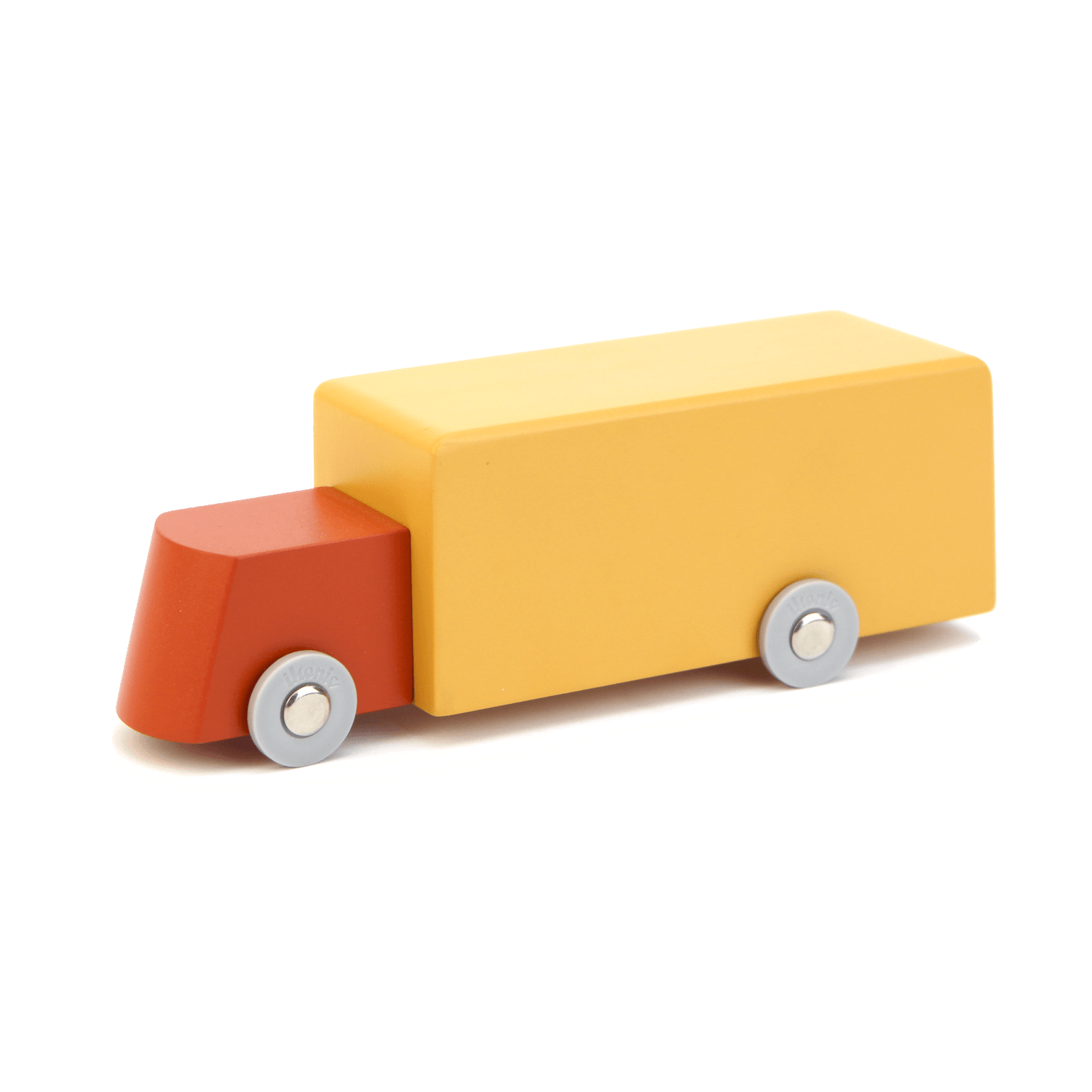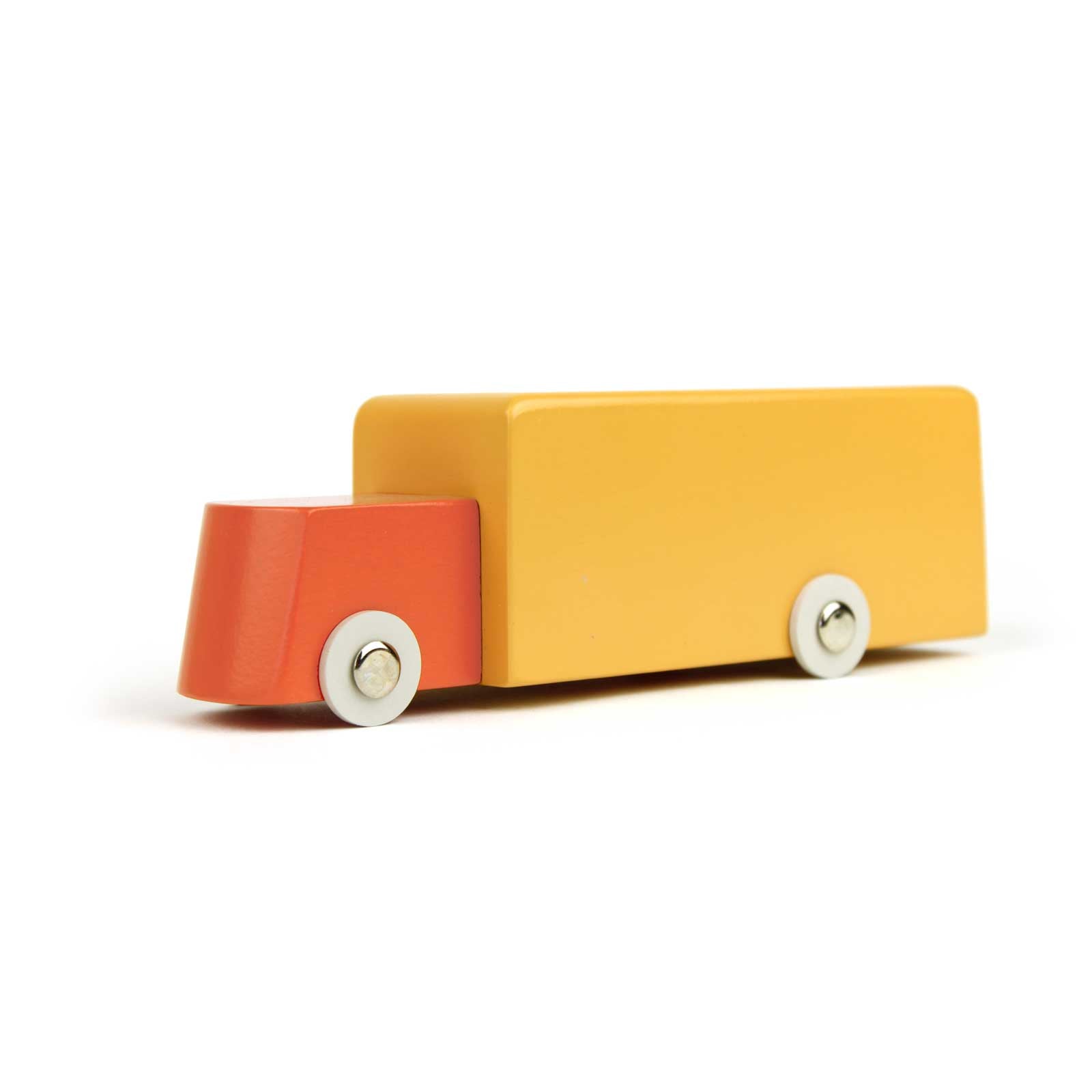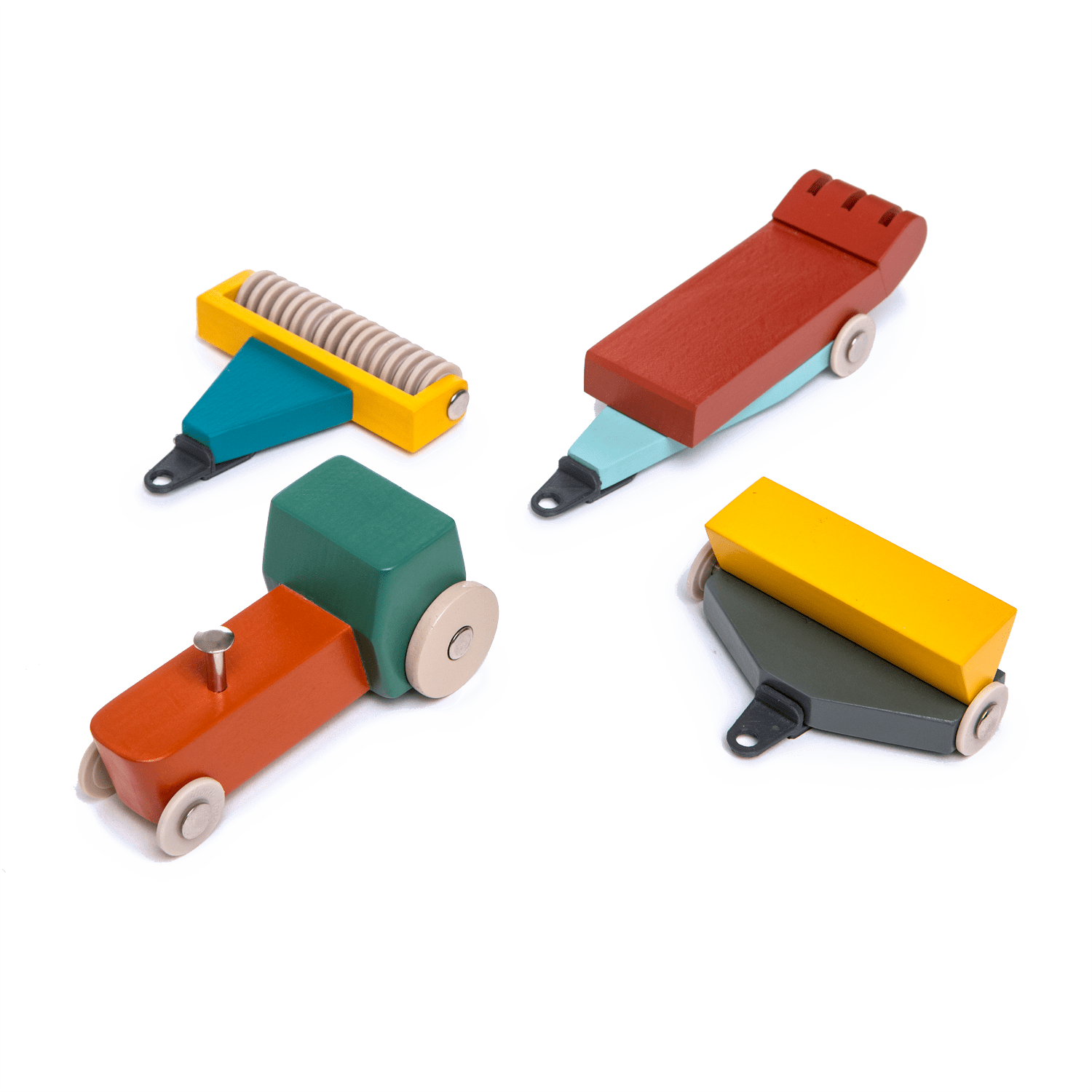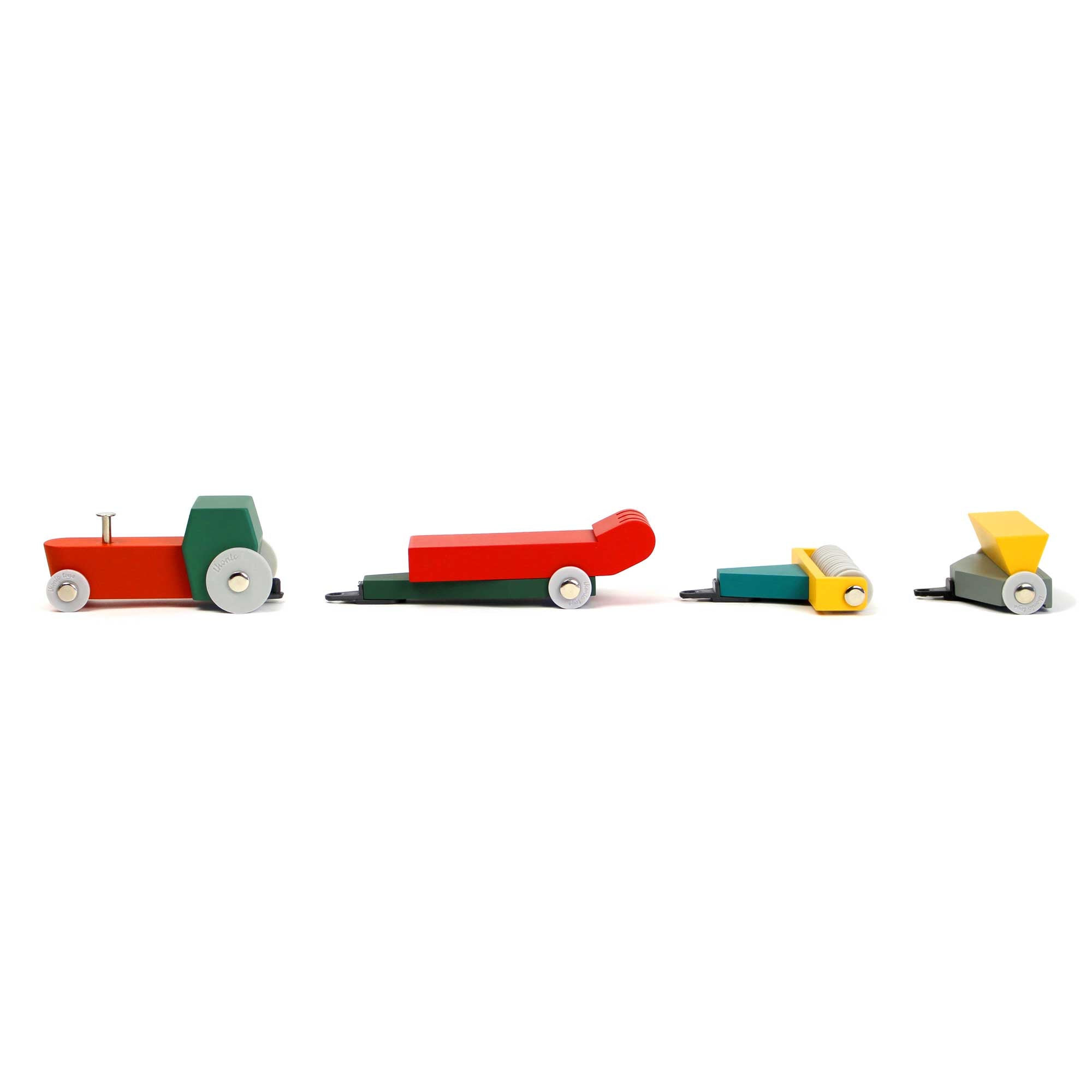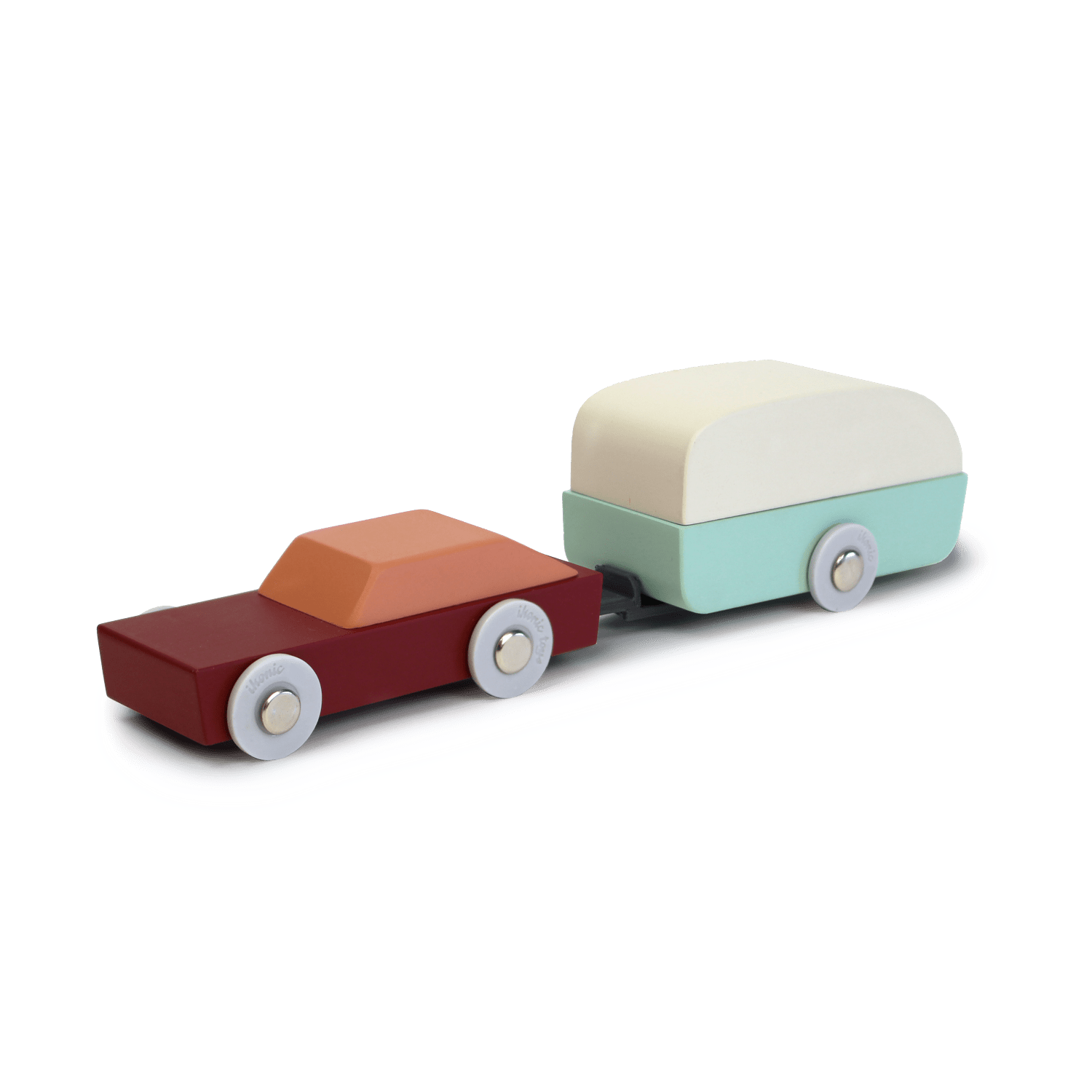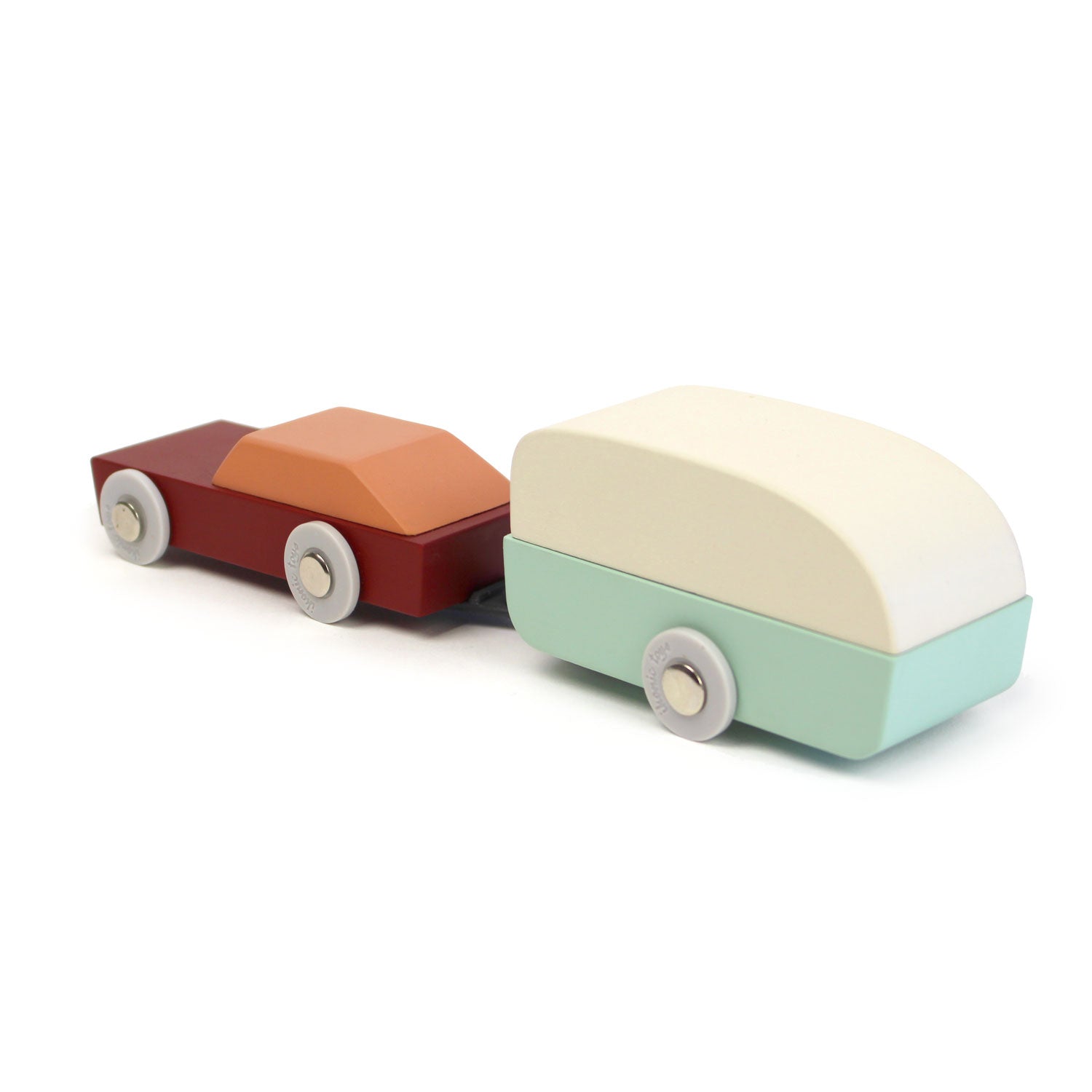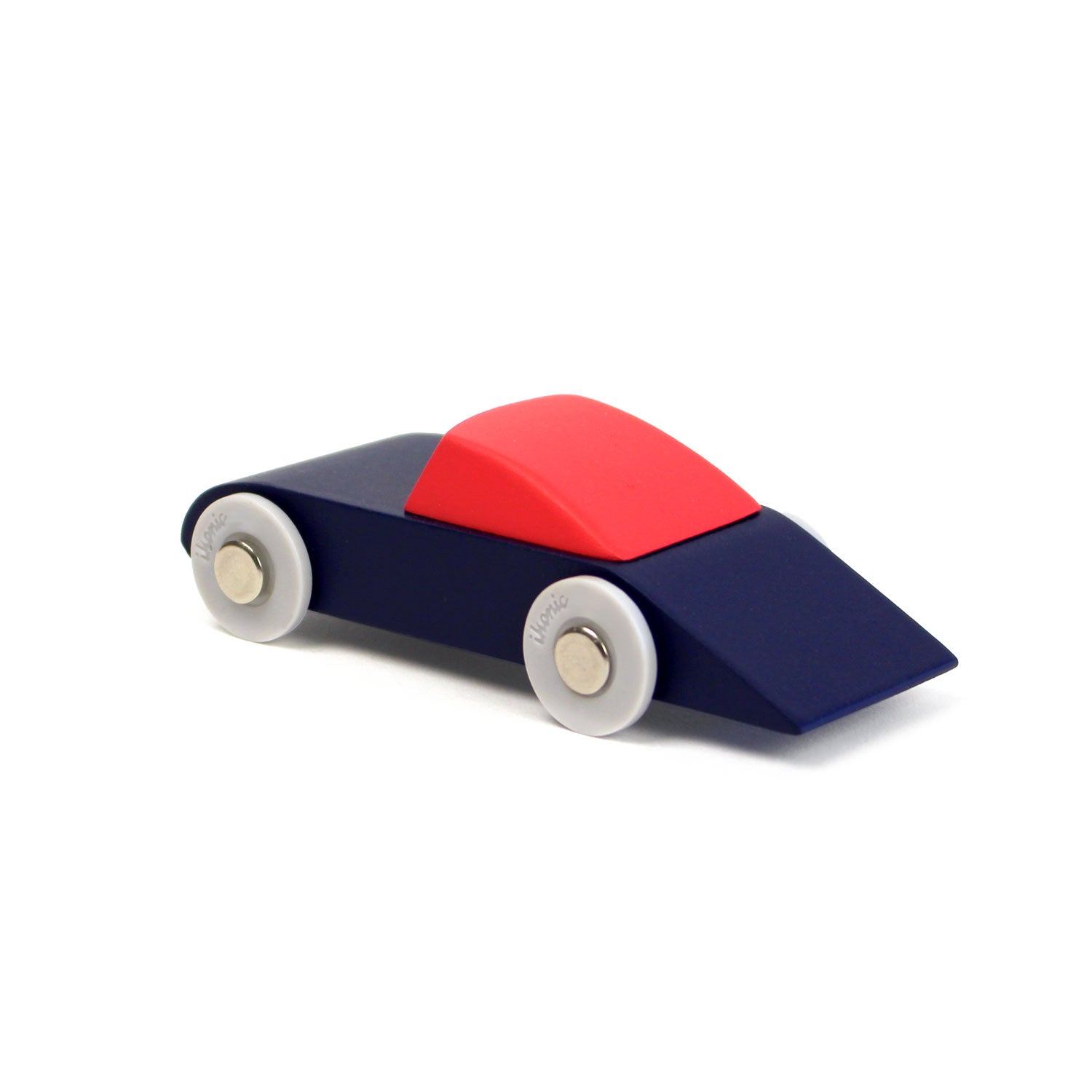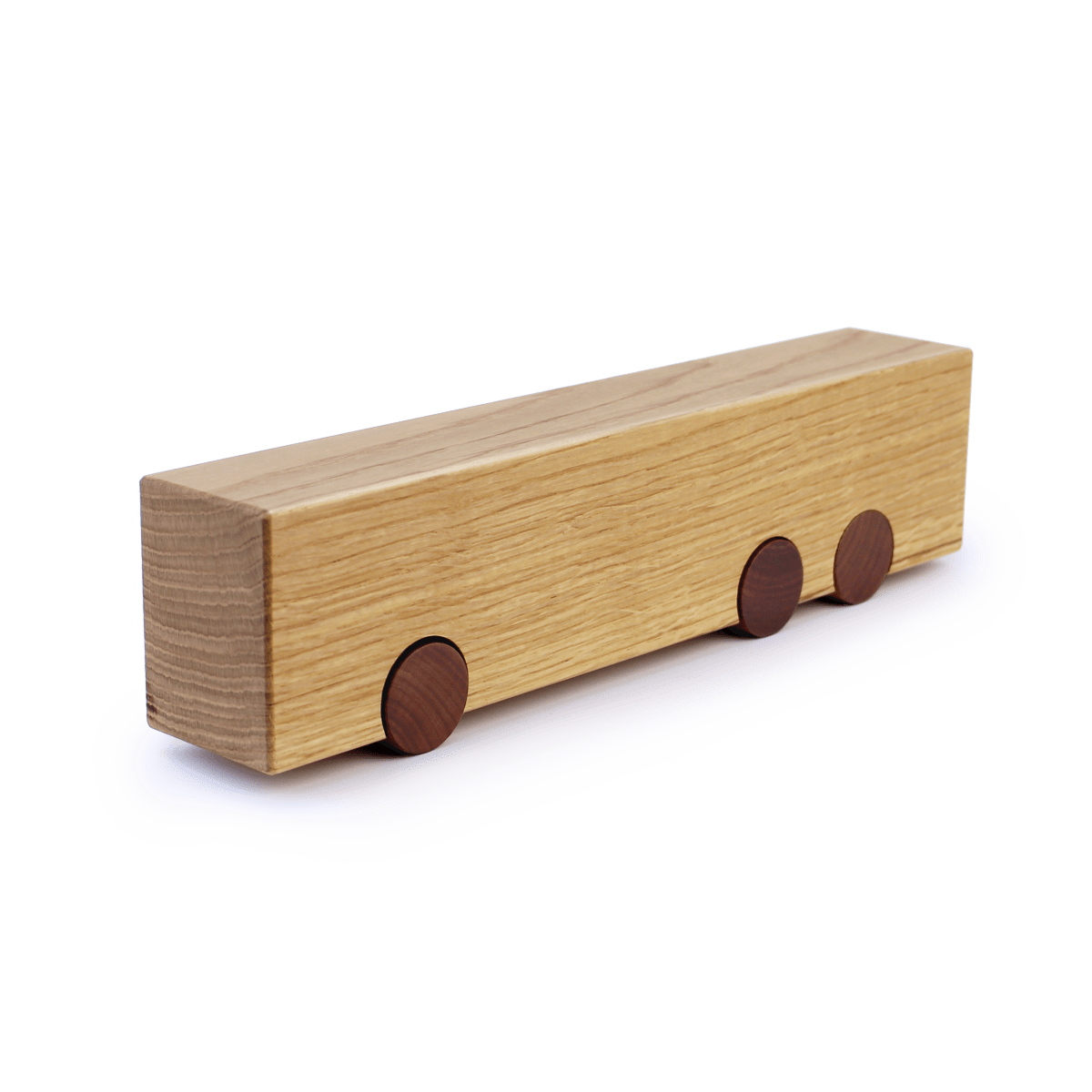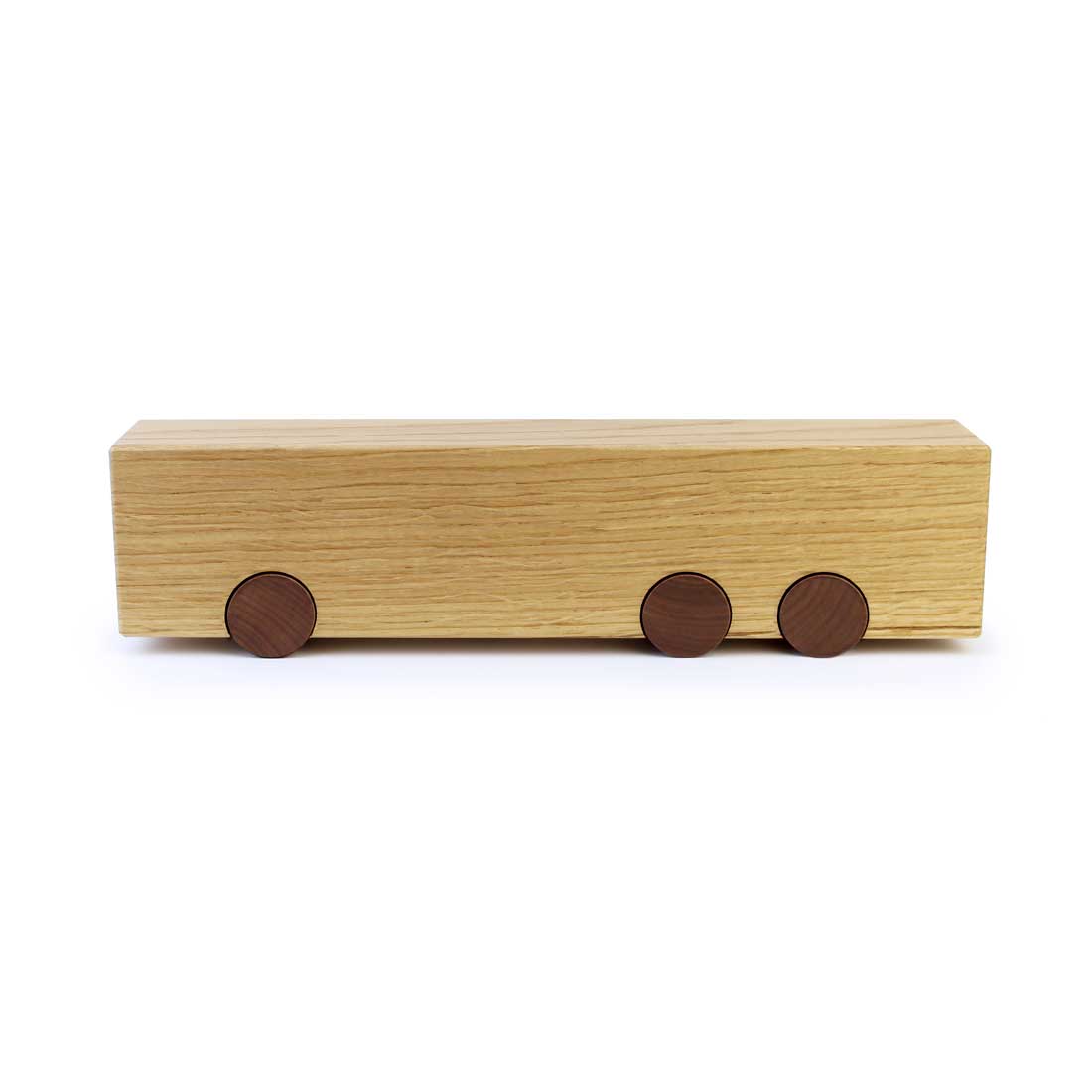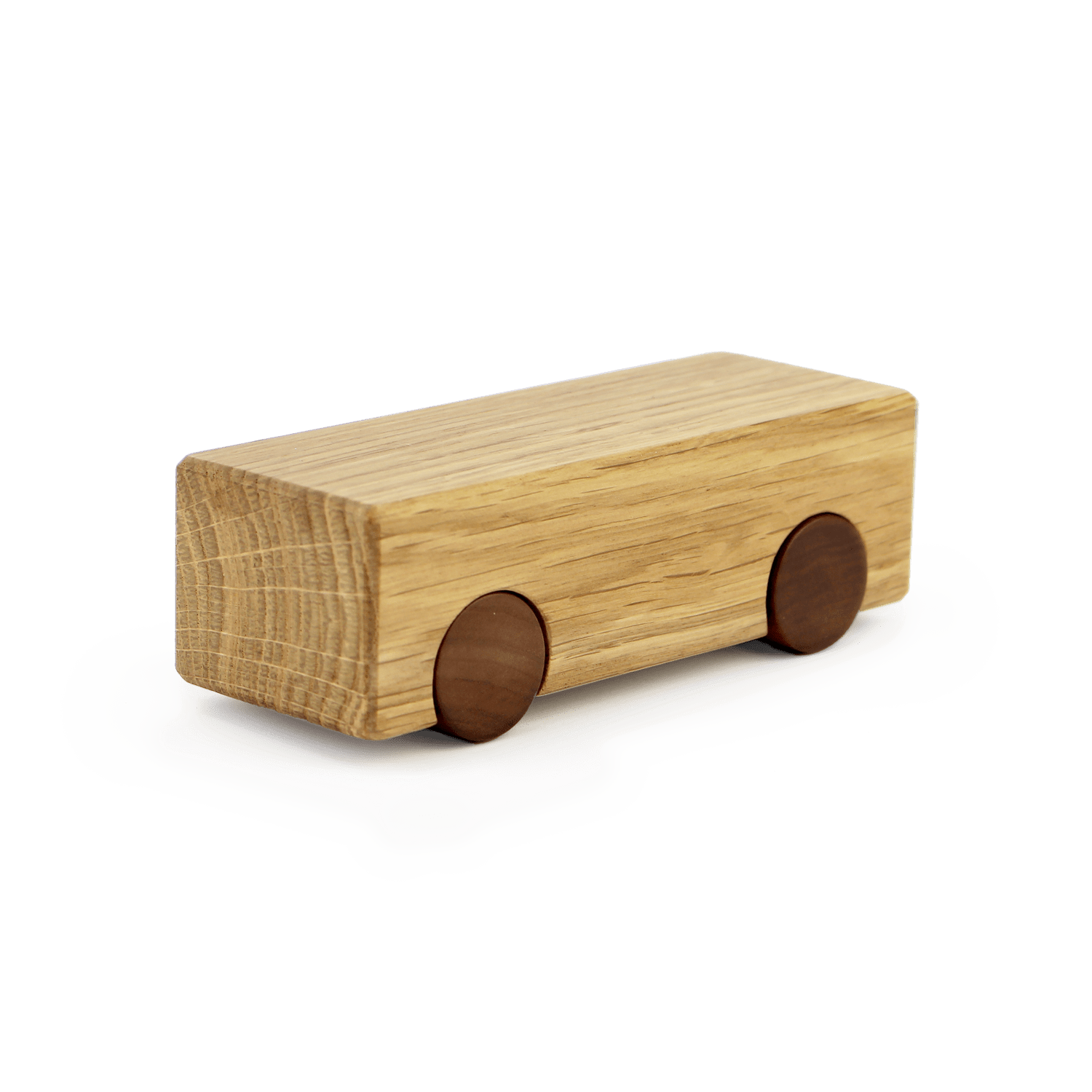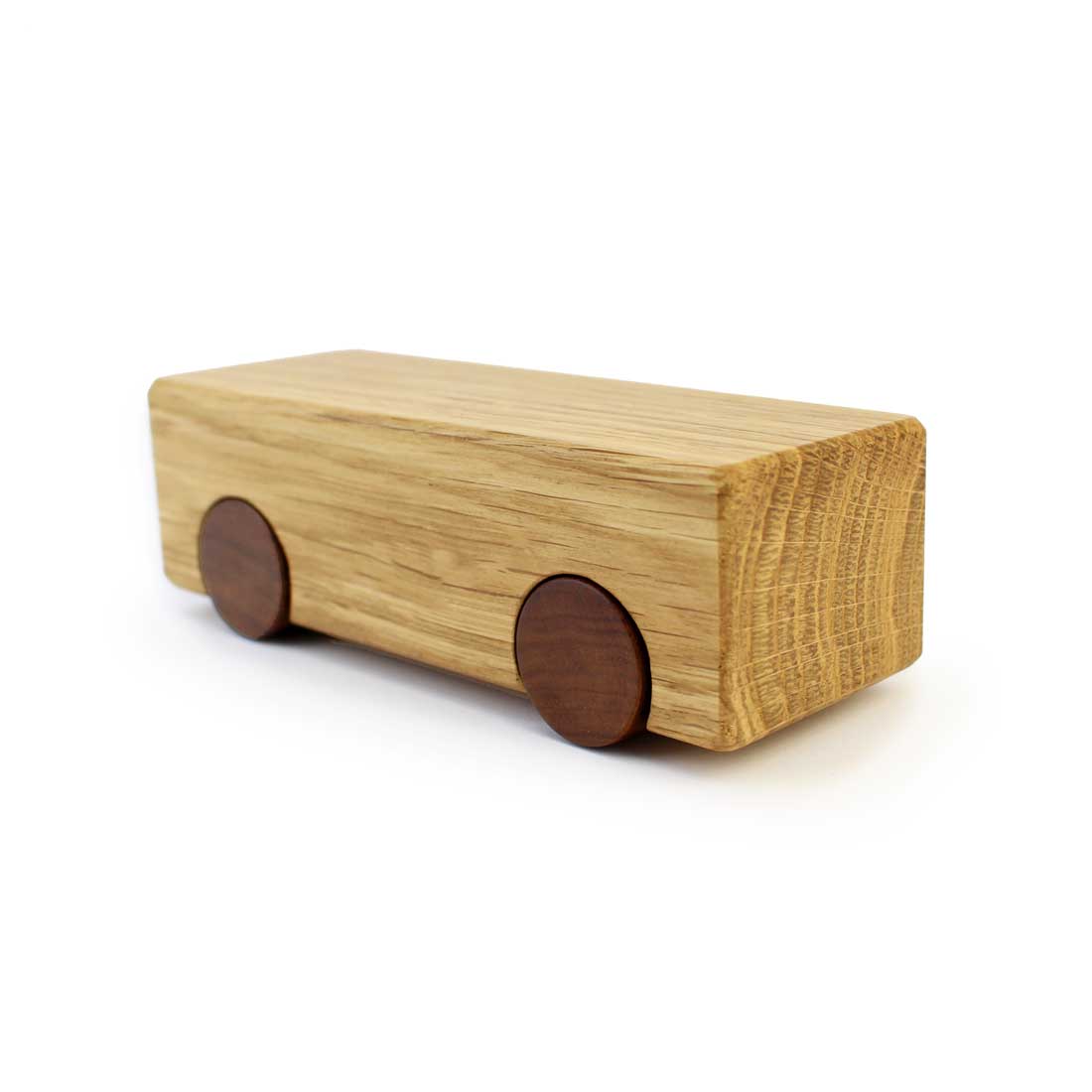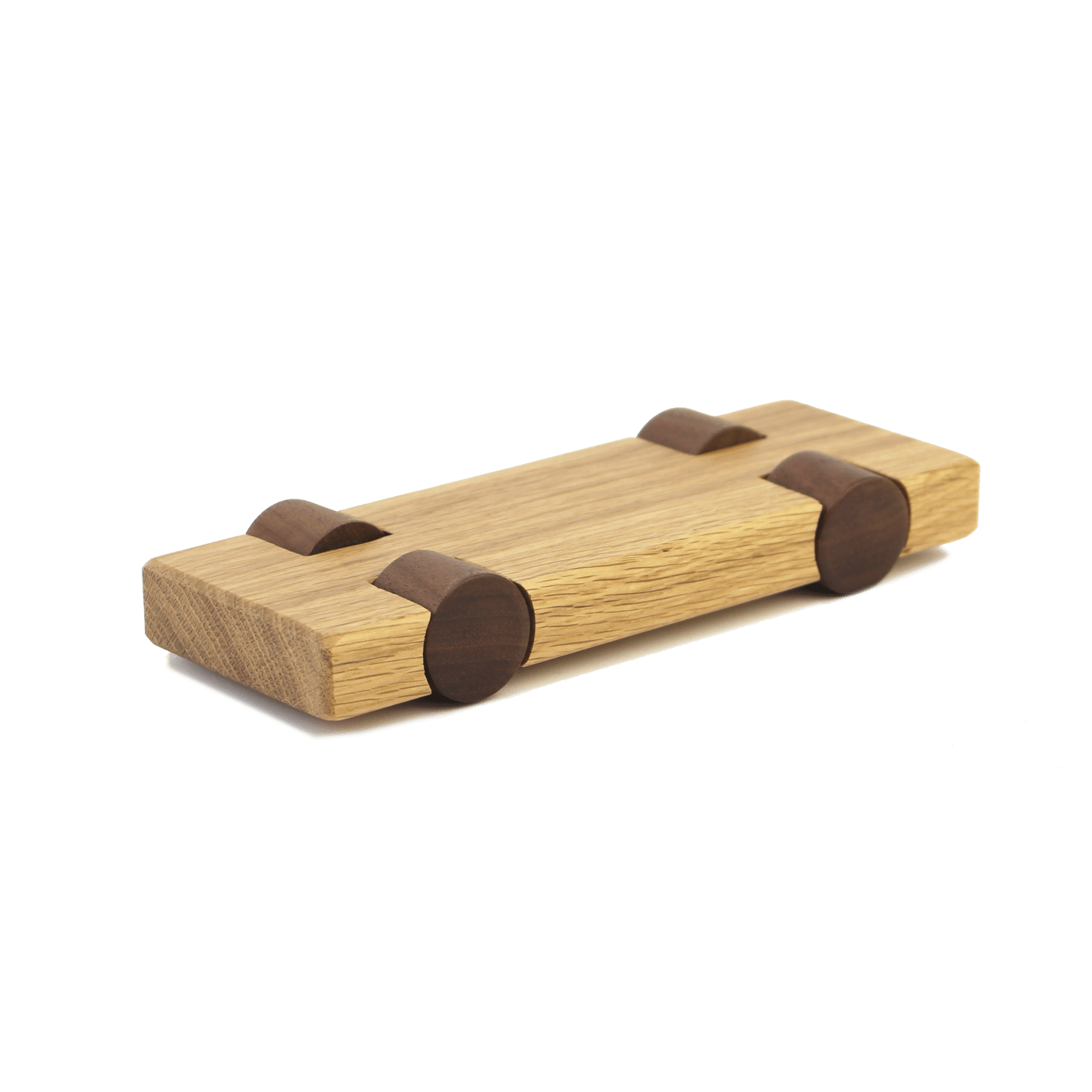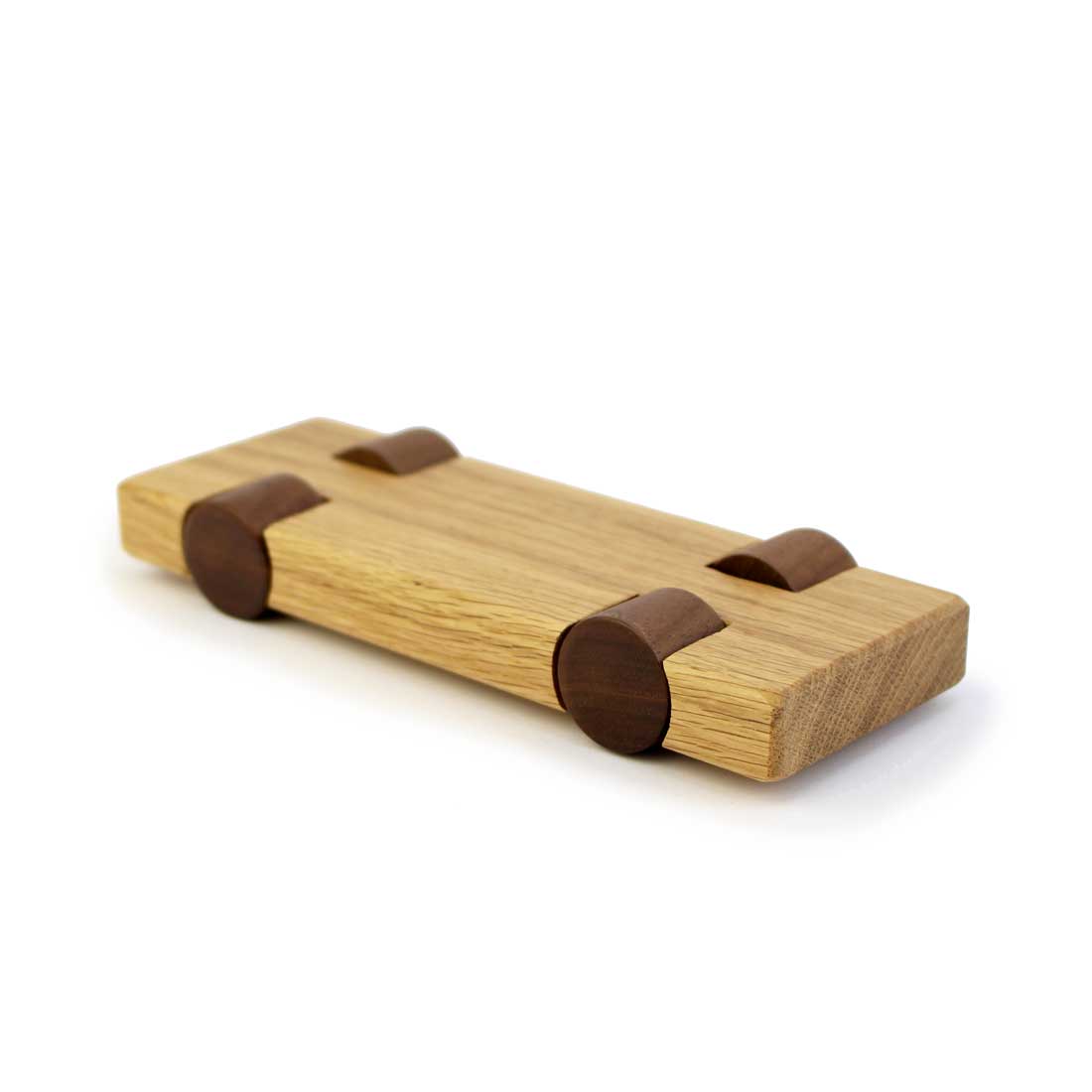
Wooden Toy Cars: The return of wooden toy cars

Wooden toy cars are making a real comeback! Where once plastic racing monsters in bright colors determined the 'street scene' in the children's rooms, more and more parents are consciously choosing wooden cars again. And not only because of the nostalgia, but also because of sustainability, safety and educational value.
What makes wooden toy cars so popular?
The popularity of wooden toy cars has grown enormously in recent years, partly due to an increased awareness among parents about sustainability, the environment and health. Plastic toys often symbolize cheap mass production, made under dubious working conditions in a faraway Asian country.
Wooden cars increasingly stand for quality, durability and a long lifespan. Many wooden toys are also designed without bells and whistles: no flashing lights or sounds, but simple shapes that invite children to creative and imaginative play. This is also reflected in the vehicles that designers Floris Hovers and Lex Pott have designed for our IKONIC brand. Instagram-worthy interiors are playing an increasingly important role in this: wooden toys look stylish and blend easily into any home.
The rise of minimalist living trends is creating a growing demand for timeless and natural toys, such as wooden toy cars, that are not only functional but also look beautiful and do not look out of place in a modern interior. In addition, wooden toy cars offer a tangible connection to the past, which appeals to many parents.
Advantages of wooden toy cars over plastic cars
Choosing wooden toy cars over plastic cars offers several advantages in terms of durability, safety and fun:
- Durability: Wooden cars tend to last much longer. They are less sensitive to breakage, can take a beating and are often passed on for generations. The sturdy materials and robust construction make wooden toy cars almost indestructible compared to mostly brittle plastic cars. In addition, they are often easy to repair.
- Environmentally friendly: Wood is a renewable resource. Many brands use FSC-certified or recycled wood (mostly beech wood) and water-based lacquer, which reduces the carbon footprint. Plastic toys, on the other hand, create tons of waste and the emission of microplastics that end up in the environment every year.
- Health: Wood does not naturally contain harmful chemicals. Research shows that 80% of all plastic toys tested contained harmful substances; this hardly occurs with wooden variants, especially with European-produced toys. For example, many wooden cars are tested for the presence of heavy metals and other hazardous substances.
- Educational value: Wooden toys stimulate imagination, creativity and motor skills because they are often so-called 'open-ended' toys. This means that the child shapes the game themselves, unlike plastic cars that often add sound and light that captures the game pattern.
- Timeless & aesthetic: Wooden cars have a classic look, do not go out of style and look beautiful in any interior. Even with some paint damage, or a fiercely weathered appearance, they still look great.
- Rest: Children play more calmly and are less likely to be overstimulated by the lack of sounds and lights, which contributes to concentrated and deep play. Children can also project their own imagination on the vehicles due to the calm design.
- Less waste: Because wooden cars last longer, they create less waste and are less likely to need to be replaced. The cars are often passed on to the next generation.
Are wooden toy cars safe for toddlers and preschoolers?
Safety is one of the main reasons for parents to choose wooden toy cars. According to the NVWA (Dutch Food and Consumer Product Safety Authority), 84% of the wooden toy products tested in the Netherlands meet the strictest European safety requirements. Especially for children under the age of three, the requirements are extra strict: loose pieces must not come loose (risk of suffocation), splinters are out of the question and used lacquer or paint must be free of heavy metals. In 2023, some wooden vehicles ended up on the warning list due to loose parts or poor workmanship, this mainly concerned products produced outside the EU.
In short: consciously choose toys with a quality mark (such as CE marking) and minimum age marking from reliable brands, and regularly inspect the wooden car for loose parts or damage. For example, wooden toy cars are safe for toddlers and preschoolers, provided these criteria are met.
Why are parents increasingly opting for wooden toy cars?
Parents consciously choose wooden toy cars for several reasons. Conscious and sustainable consumption has been a trend for years, and toys made of wood fit well with an environmentally conscious lifestyle. In addition, parents are increasingly aware of the potential harmful substances in plastic toys, and they want to limit their children's exposure to these substances. The long lifespan of a wooden car ensures that the car does not have to be replaced quickly, which saves costs and waste. The peace and quiet that wooden toy cars bring is also mentioned: they are less crowded, less stimulating and provide a relaxed playing atmosphere. Furthermore, there is a growing appreciation for quality and 'slow living', where there is a more conscious choice for timeless toys that challenge a child well.
Finally, many parents simply want to surround their children with natural materials, so the wooden toy cars perfectly match this desire.
From what age are wooden toy cars suitable for children?
General advice is that simple wooden vehicles are suitable from about 12 months, provided they are robust and do not contain small parts. For babies from 6 months, there are soft or rounded wooden rattles, which allow small children to safely get acquainted with the material. For toddlers (1–3 years), larger models are best suited, as their grip strength, motor skills and safety are important at this age. For preschoolers (from 4 years old), more refined and detailed wooden toy cars are suitable, possibly with additional accessories such as garages, dolls or traffic signs.
Pay close attention to the manufacturer's age indication on the packaging, the CE mark and whether the toy fits your child's development. A wooden car is also fun for older children, especially when it becomes part of a collection.
Wooden Toy Cars vs Plastic Cars: A Factual Comparison
Still hesitating between wooden toy cars and plastic cars? Below are some pros and cons:
- Lifespan: Wooden toy cars last up to 10 times longer than plastic variants. A consumer survey found that 65% of wooden toy products were older than 5 years, compared to only 12% of plastic toys.
- Safety: According to research, 80% of the plastic toys tested contain potentially harmful substances, compared to 6% of wooden toys with a quality mark.
- Fun fun: Wooden cars offer more room for imagination, while plastic cars more often rely on fixed scenarios and pre-programmed sounds.
- Waste and environment: More than 90 million kilos of plastic toys end up in landfill every year; wooden toy cars are often reused, repaired or repainted for a second round after long-term use.
Sustainability and eco-friendliness of wooden cars
The choice of wooden toy cars contributes directly to a better environment. The production of plastic toys requires fossil fuels and causes much more CO₂ emissions than the production of wood. As a renewable raw material, wood is often harvested responsibly, especially when FSC-certified material is used. The recyclability of wooden toy cars is also twice as high as that of plastic toys, because wood is naturally biodegradable. When wooden toys come to the end of their lifespan, they can often be reused by repairing or painting them. This can often be done with materials that are already present in the house. This is in contrast to plastic cars, which often end up on the waste mountain and sometimes take hundreds of years to break down.
Are wooden toy cars more expensive? An investment in the future
The purchase price of wooden cars is usually slightly higher than that of a plastic car. Nevertheless, various studies show that wooden toy cars are ultimately cheaper, because they last for generations, break down less quickly and are often sold second-hand due to their higher residual value. Moreover, with a wooden toy car you often choose an honest product where attention has been paid to raw material, design and finish. In the long run, this investment pays off for both the family and the environment.
How long do wooden toy cars last? Quality and heritage
With proper maintenance, wooden toy cars will last for years and can often even be passed down from generation to generation. There are still a lot of wooden toys that are still used after 50 years! The sturdy material and solid workmanship give wooden toy cars their reputation for indestructibility. Moreover, many families value passing on these sustainable wooden cars as an 'heirloom', a tangible memory of the past, which they are happy to pass on. This makes wooden toy cars not only a fun purchase, but also a valuable investment in lasting fun.
Do wooden toys stimulate children's learning and development?
Yes! Wooden cars stimulate various development aspects:
- Motor skills: by pushing, pulling, stacking wooden cars, your child trains his fine and gross motor skills.
- Creative thinking: wooden toy cars are rarely tied to fixed functions, allowing children to let their imagination run wild. Today the car is a racing monster, tomorrow a fire truck or a taxi.
- Cognitive skills: play with wooden cars supports problem-solving and planning, for example when building a wooden train track.
- Social play: children learn to play together, divide roles and work together when they play with several wooden cars or in the company of friends.
- Introduction to traffic rules and vehicles: playing with wooden cars offers great starting points to learn about traffic, safety and different professions. If you choose 'open-ended toys' such as wooden cars, you contribute to a versatile and healthy development of your child.
What should you pay attention to when buying wooden toy cars?
Always pay attention:
- Age indication: is it appropriate for your child's age?
- CE marking or other quality marks (such as TÜV, FSC)
- No sharp edges or splinters
- Water-based paint or toxic-free lacquer
- Origin: EU producers (strict quality requirements)
- No small, loose-fitting parts for young children
- Compare prices, as quality is sometimes a little more expensive but lasts longer. Online reviews and certificates can also be a good guideline for the choice of safety and sustainability.






